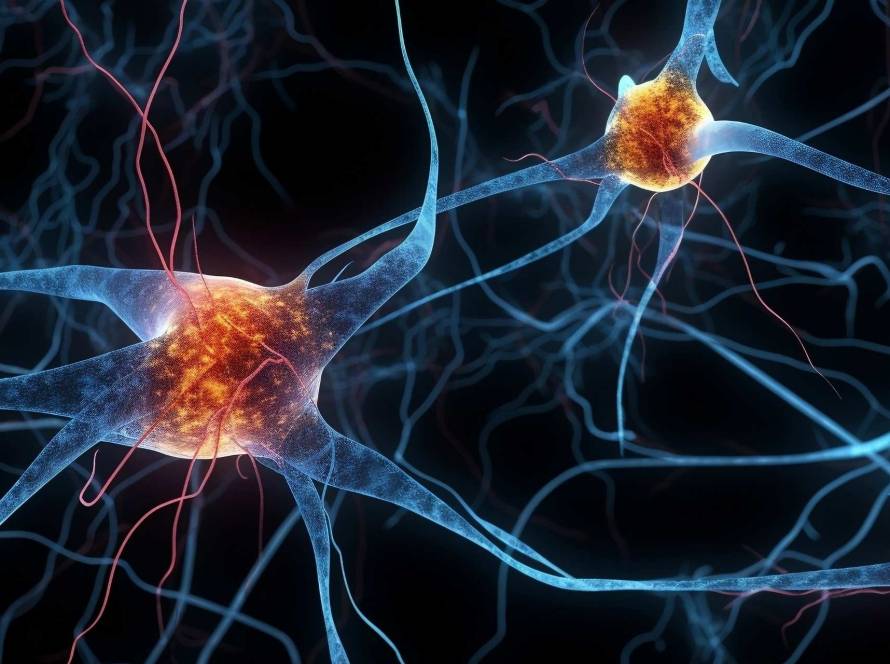Our cells show aging through several key mechanisms that shape the entire process. Each cell gradually loses its power to maintain balance as its components deteriorate. We now know that oxidative damage, cellular senescence, ongoing inflammation and DNA damage substantially affect age related conditions. Senescent cells, which stop dividing but stay metabolically active, build up in our body over time. These cells create ripple effects throughout our tissues and organs.
This piece breaks down why cells age and how cellular senescence connects to aging. The text gets into basic biological processes driving microscopic aging, including telomere shortening, which associates inversely with lifespan.
What happens to cells as we age?
Distinct microscopic changes demonstrate how cells age and affect every tissue in our bodies. These alterations happen gradually yet inevitably as we go through life. Our health changes at the most fundamental level during this experience.
Reduced replication and cellular turnover
Cells divide and replace themselves much slower as we age. Scientists compared tissue samples from people in their 20s with those in their 80s. The results showed cell division rates decreased by approximately 40% in colon tissue, 25% in esophageal tissue and an astonishing 83% in sinonasal tissue.
Our skin makes this process easy to observe. Young adult skin cells complete their path from the basal layer to surface in about 20 days. The same process takes older adults’ cells upwards of 30 days. This slower cellular turnover leads to thinner skin, slower wound healing and more damaged cells that make aging visible.
Accumulation of molecular and structural damage
Our cells steadily collect various forms of damage throughout our lives. DNA mutations, misfolded proteins and changes to cellular structures become more common. This buildup starts even before birth and continues relentlessly as we age.
Age makes the cell membrane less fluid, which makes nutrient transport and cellular communication harder. Waste products like lipofuscin (a brownish pigment) build up inside cells. On top of that, it has fewer energy-producing mitochondria, which reduces cellular power generation.
Biological vs chronological aging at the cellular level
Our chronological age, simply how many years we’ve been alive, is different from our biological age, which shows how old our cells and tissues actually behave. Scientists measure biological age through markers like telomere length (protective caps on chromosomes that shorten with each cell division) and DNA methylation patterns that change predictably over time.
Different cell types age at different rates within the same person. Fast-renewing cells in blood or intestinal lining stay relatively “young” throughout life. Slowly-dividing cells like neurons match our chronological age more closely. Some tissues may then show signs of aging faster than others within the same individual, scientists call this asynchronous aging.
Core mechanisms driving cellular aging
The molecular mechanisms that control cellular aging work like precise clockworks and determine how fast tissues break down. Six basic processes work together and gradually compromise how cells function throughout life.
DNA damage and genomic instability
Our somatic cells face DNA damage, approximately 10,000-100,000 lesions daily, from internal metabolic processes and external environmental factors. Strong repair systems exist, but unrepaired damage builds up as time passes. This genomic instability acts as a primary driver of aging rather than just being a result. Research shows DNA damage increases substantially in many tissues with age. Heart tissue shows the highest levels of oxidative DNA lesions compared to lung tissue. DNA damage responses stay active and trigger metabolic changes and cellular senescence that ended up causing tissue dysfunction.
Telomere shortening and replicative senescence
Telomeres protect chromosome ends and get shorter by 50-200 base pairs each time cells divide. This erosion happens because DNA polymerase can’t completely copy the lagging strand, which creates an “end-replication problem”. Critically short telomeres trigger a DNA damage response that involves ATM, p53 and p21CIP1 pathways. Telomere shortening works as a “mitotic clock” and limits cell growth. This vital mechanism affects age related diseases. Studies link shorter leukocyte telomeres to higher risks of atherosclerosis and cardiovascular disease.
Mitochondrial dysfunction and oxidative stress
Mitochondrial function gets worse as we age. These cellular powerhouses create reactive oxygen species (ROS) while producing energy. Scientists once thought ROS were harmful, but moderate levels now seem to send survival signals that extend lifespan. Mitochondrial DNA remains 10 times more likely to mutate than nuclear DNA due to oxidative damage. Changes in mitochondrial dynamics that come with age, especially reduced Mfn2 fusion protein in skeletal muscle, break down the mitochondrial network.
Epigenetic drift and altered gene expression
Age brings big changes to the epigenome, chemical modifications that control gene expression without changing DNA sequence. DNA methylation patterns change so predictably that they serve as “epigenetic clocks” to measure biological age. These changes stem in part from oxidative stress and DNA damage. Studies of identical twins show significant differences in how they age because of epigenetic changes. This explains why people with identical genes can age differently.
Loss of proteostasis and protein aggregation
Proteostasis, the balanced maintenance of cellular proteins, breaks down with age. This decline shows through weaker chaperone function, reduced proteasomal activity and less autophagy. Damaged proteins then pile up and form insoluble clumps. Research shows protein aggregation happens even in healthy aging brains. These appear as amyloid plaques, neurofibrillary tangles and Lewy bodies. This natural aging process contributes substantially to neurodegenerative diseases.
Cellular senescence and SASP
Senescent cells, those that stop growing, build up faster as we age . These cells develop a senescence-associated secretory phenotype (SASP) and release many inflammatory factors including:
- Pro-inflammatory cytokines (IL-6, IL-8);
- Chemokines and growth modulators;
- Matrix metalloproteinases (MMPs).
SASP composition changes based on what triggers senescence, cell type and environmental context. SASP creates inflammation in tissues that can spread senescence to nearby cells through “paracrine senescence”. While cellular senescence evolved to suppress tumors, its buildup promotes aging and age related diseases.
How cellular aging impacts the body
The body undergoes sweeping changes as cells age and collect damage. These cellular changes reshape every organ system and show up as visible signs of aging that contribute to age related diseases.
Tissue degeneration and organ decline
Senescent cells build up and directly cause tissue shrinkage and organ problems. These cells block communication between cells and trigger lasting inflammation in tissues where cells frequently divide. The body’s tissues start breaking down, which shows up as thinner skin layers, less collagen and skin that loses its stretch.
Our organs slowly lose their backup capacity as we age. Research shows a drop of approximately 1% per year after age 30. Hearts, lungs and kidneys show this decline most clearly. These organs work fine during normal activities but struggle when stressed or injured. Aging hearts get larger and lose heart muscle cells, which leads to poor heart function.
Increased risk of age related diseases
Age stands out as the strongest predictor of many chronic conditions. Heart disease, cancer, diabetes, stroke and high blood pressure become much more common as people age. DNA damage, shorter telomeres and cellular senescence create this link by making the body more vulnerable to disease.
Senescent cells multiply exponentially with age and cause various age-related disorders through their senescence-associated secretory phenotype (SASP). SASP releases inflammatory molecules that create a lasting low-level inflammation called “inflammaging“. The body shifts from healthy aging to disease when senescent cells and their inflammatory signals pass a critical point.
Links to neurodegeneration, cancer and cardiovascular disease
Brain aging strongly relates to cellular senescence. More senescent cells in brain tissue lead to memory loss, Alzheimer’s disease and Parkinson’s disease. Scientists have found that neurons in Alzheimer’s disease show signs of senescence and produce more inflammatory factors.
Senescent cells gather in artery plaques and cause heart disease. The heart muscle changes with age through enlarged heart cells, scarring between tissues and inflammation. These changes hurt the heart’s ability to pump blood. Atrial fibrillation becomes more common with age.
Cancer rates also climb with age and peak between 85-90 years. The body uses cellular senescence to stop tumors from forming. The SASP from built-up senescent cells can push nearby cells toward cancer through inflammation and tissue changes.
Can we slow or reverse cellular aging?
Scientists have found that there was promising ways to slow down and maybe even partly reverse how cells age. These approaches range from diet changes to innovative biotechnology that target the basic mechanisms making cells deteriorate.
Caloric restriction and fasting-mimicking diets
Scientists have proven that eating fewer calories helps various species live longer. Research shows that people who reduced their calorie intake by just 12% for two years slowed their aging by 2-3%. This change could lower their death risk by 10-15% over the next decade. The fasting-mimicking diet (FMD) offers another option. This 5-day plan is rich in unsaturated fats but low in calories, protein and carbs. It gives us fasting benefits while providing needed nutrients.
Exercise and circadian rhythm optimization
Exercise has powerful effects on cell aging markers. Athletes who do intense endurance training have fewer aging signs in their colon tissue. Master athletes show aging markers like people decades younger. People who exercise a lot have telomeres that look nine years younger than those who don’t move much. Our body’s daily rhythms also play a vital part in fighting metabolic aging. Good daily patterns help maintain NAD+ levels, which naturally drop with age. NAD+ helps with energy metabolism and fixes DNA damage.
Senolytics and NAD+ precursors
Senolytic drugs target and remove aged cells that build up over time. Scientists are testing compounds like dasatinib+quercetin and fisetin in clinical trials. These drugs work by making old cells die off naturally. Tests on mice show these treatments reduce inflammation and help them move better. NAD+ precursors boost cellular NAD+ levels that drop as we age. When animals take these supplements, their mitochondria work better. They also process insulin more efficiently and have healthier stem cells.
Gene therapies and cellular reprogramming
Cell reprogramming opens new doors in aging reversal. Scientists can use Yamanaka factors (OCT4, SOX2, KLF4) to reset cell age without changing what the cells do. New research shows chemical combinations can achieve similar results without genetic changes. Gene therapies targeting telomerase, klotho and sirtuins help animals live longer. One amazing study increased remaining lifespan by 109% in aged mice using OSK factors delivered through a special virus.
Supplements targeting mitochondria and telomeres
Some supplements help protect cell parts that age affects. MitoQ, Urolithin A and omega-3 fatty acids make mitochondria healthier and more numerous. A supplement made from Astragalus made telomeres longer in a six-month study with no bad side effects. Alpha lipoic acid (ALA) helps activate telomerase through PGC1-alpha. Scientists still need to study these supplements carefully because they might increase cancer risks.
The way cell health connects to living longer is like a complex dance between our genes, surroundings and how we live. We can’t turn back time completely yet, but we’re getting better at slowing down aging. As scientists dig deeper, we’ll learn more about our cells and find new ways to help them stay healthy. The main goal isn’t just living longer, it’s staying healthy longer, without chronic diseases slowing us down. By tackling aging right at the cellular level, we’re turning this dream into something real.


